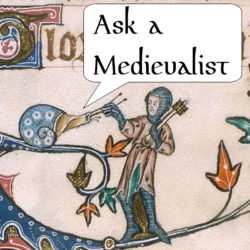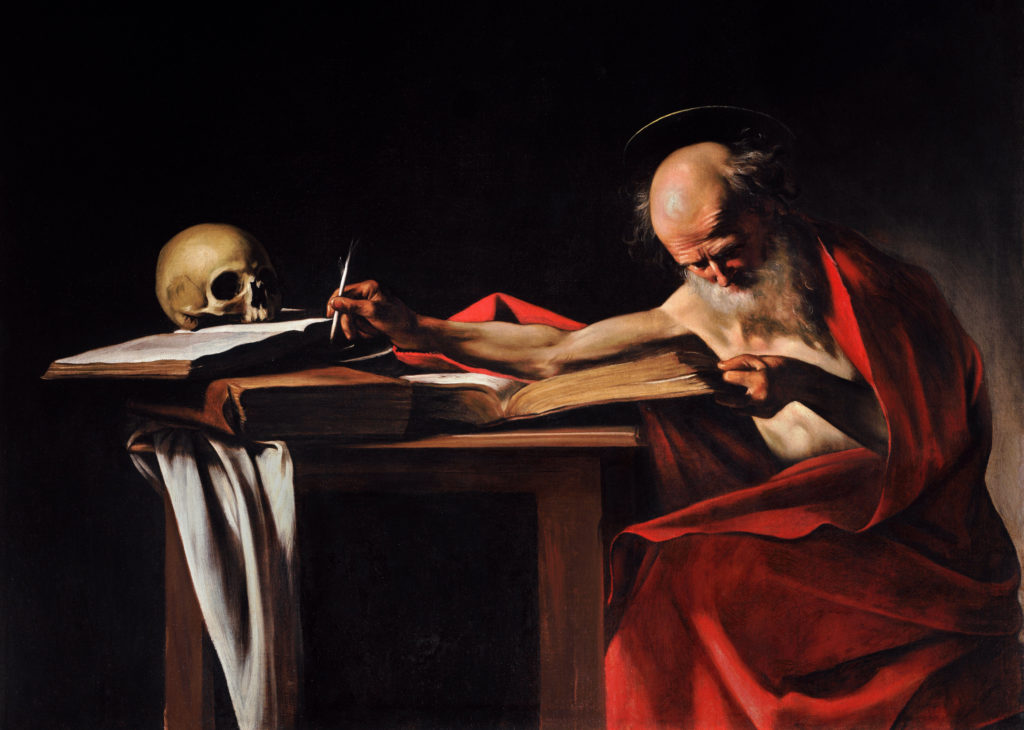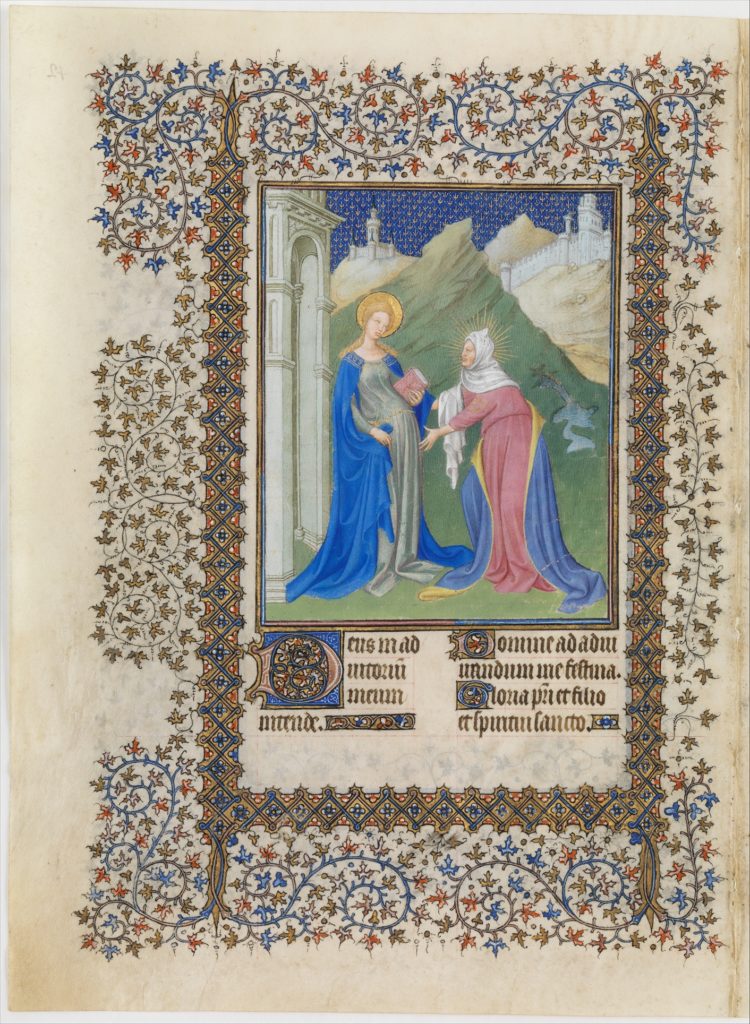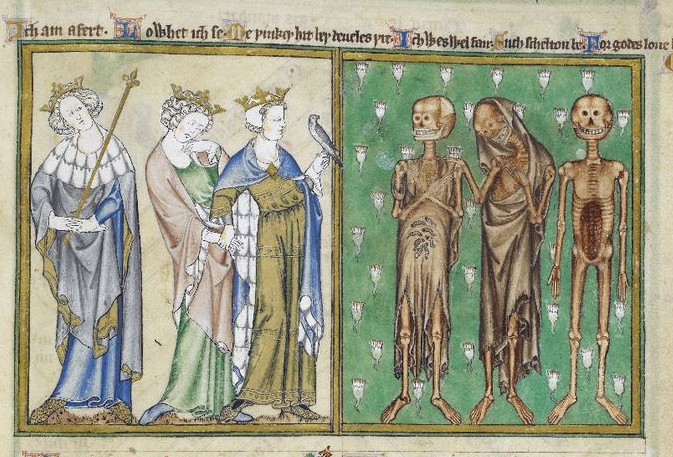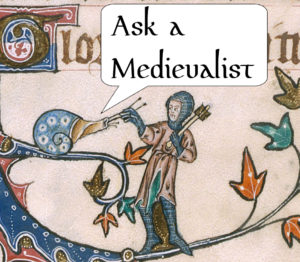Summary
Welcome to part two of our series on decolonization. This week, Em and Jesse discuss what the Middle Ages looked like in the Americas before the arrival of colonizers. We take brief looks at the Mayan, Aztec, Mississipian, and Moche civilizations and a few of their many achievements. With some fun digressions about the Confederate battle flag, Em’s panic-inducing trip to the Cu Chi tunnels, and the noises that eagles make.
Notes, Annotations, and Corrections
1/ Daily Show from 2001 reminds us that Colbert is a master. [OK, this was 19 years ago! My sense of time during my own life is bad.–Jesse]
Daily Show 2015
Daily Show in 2017 on Confederate Memorial Day
On Bree Newsome’s removal of South Carolina’s Confederate flag.
Jesse: Trevor Noah is amazing, but I miss Jon Stewart soooooooooooo much. Why can’t we have both? (I guess we’ve proven we don’t deserve such bounty.) Many, many sobbing emojis.
2/ Berlin Wall: 1961–1989 (or 1991, depending on how you’re counting).
3/ Madison had statues of Forward (a lady who is kind of our symbol?) and Hans Cristian Heg pulled down. HCH is an interesting case because he was a Norwegian immigrant and an abolitionist, anti-slavery activist (who led Wisconsin’s anti-slave-catcher militia), politician, and prison reformer who died of wounds received at the Battle of Chikamauga. However, just because he was pretty great for his time doesn’t necessarily mean that he would be great by our standards today–I’ve seen some allegations that he wasn’t exactly pro-Black (which aren’t really substantiated in any news article, so I don’t know); he was also a “49er,” meaning he went West to participate in the Gold Rush–incidentally, Wisconsin’s motto, “Forward,” is partially about Westward expansion, which is, you know, a lot about the Federal Government massacring (or permitting the massacre of) various indigenous peoples in order to permit (White) settlers to move in. (Also it feels weird to think about Wisconsin as “West.” Hmm.) So–I get it. I don’t totally believe that the people who pulled down the statues were aware of these things when they were doing the destruction–I think they were just angry. Buuuuuut you know, whatever, seems justified.
Also they (i.e., the same group that pulled down the statues) beat up a state congressperson, but no one was upset about that for some reason. (He is a Democrat, and Republicans control the House and Senate here, so that’s probably why we didn’t hear too much.) He has since co-sponsored legislation with Republicans that would make it a crime to pull down statues. I feel like he might be taking the wrong lesson from this.
I wanted to add a note on the guy who got arrested (Yeshua Musa, who was a local BLM activist), because while I think I gave the story as I understood it at the time, it’s worthy of thinking more about–he has been indicted on federal extortion charges and faces up to 40 years in federal prison. Also, he wasn’t demanding money from local businesses (as I suggest in the podcast discussion), he was demanding a meal. Whatever else I have to say about his behavior, I do pretty much feel like the Justice Department has made the decision to charge the heck out of him in order to use him as an example. I guess I don’t know too much about the situation (my suspicion is that a lot of stuff isn’t really getting covered by the papers), but I’ve noticed that political activist groups, like BLM (and other similar local ones), are not nostalgic or petty, and when they get angry about someone getting arrested there’s probably a real (and strategic) reason behind it. The anger about Mr. Musa’s arrest has persisted, and a few other local activists have also been arrested, which is very suspicious in my opinion.
Jesse: I think that this is an excellent example of why we should spend more money on social services and less on police. Many Americans have been taught to believe that police protect us from crime, and that can absolutely be true, but that is not the main function of the police. As the OED (Oxford English Dictionary) points out, the verb “to police” comes from “Middle French, French policer to administer, govern, control (1461 in Middle French).” **Control** is the operative word in this definition. The noun “police” is best understood today as the OED’s definition 5a: “The civil force of a state responsible for maintaining public order and enforcing the law, including preventing and detecting crime.” We frequently assume that the most important words here are “preventing and detecting crime,” but one of the most important functions of the police has always been “maintaining public order and enforcing the law.” “Maintaining and enforcing” tends to lead directly to the final verb in the OED’s definition of “to police”–i.e., control.
The police are the civil arm of the state, and their main purpose is to control citizens who are seen as in need of “maintaining and enforcing.” This is why African Americans are stopped when driving “nice” (i.e., expensive) cars in “nice” (i.e., white) neighborhoods, or when entering their own houses (in “nice” neighborhoods). The goal is a surveillance state that controls citizens by watching them–i.e., policing them–and, most importantly, by ensuring that those citizens know that they are being policed and have no power to change the system because they lack knowledge of the system and how it works. Meanwhile, white citizens–and particularly white wealthy citizens–have intimate knowledge of the system’s inner workings because they are born into the institutional hierarchy, allowing them to get off with a warning or to receive sentences below the legal minimum for all sorts of crimes including rape–the same crime for which many innocent African American men have been lynched–because these (white) men supposedly have “bright futures.”
The more citizens are controlled, the more they rebel. Until we can solve homelessness and hunger, provide mental and physical health care to all who need it, and ****treat everyone with equal respect**** (instead of making some people feel that they are being watched their entire lives by a civil force just waiting to throw them in jail), we will not solve violent crime. More police do not make us safer. If everything looks like a nail to a hammer, police are similar–they only have the tools to look at people as “criminals” or “not criminals.” Police are not trained or equipped to do anything else. The more police you put into “violent neighborhoods” without social services, the more violence there will be. The more hammers you buy, the more nails you use.
Thanks to Michel Foucault for the theory on knowledge, power, and surveillance. Check out Discipline and Punish.
4/ By the way, if you’re interested in law enforcement spending as a percentage of city or county budget AND you live in Wisconsin, my running buddy Tamarine put together this super useful website.
5/ I have no idea why right around 10 minutes it sounds like Em is speaking from inside a paper bag. Crinkle, crinkle. Sorry about that.
6/ 
(All credit to the great Gary Larson.)
For the record, I (Em) am opposed to all films with the basic plot of “white man joins a foreign culture and becomes its most awesome member.”
Custard’s Last Stand was in Janesville, WI. They made really good frozen custard (I think custard is a Wisconsin thing? It’s like ice cream but creamier, because they add more egg yolk). And to be fair, General Custar was never portrayed by them as a hero in any sense. [Seems more like they were celebrating his death with delicious desert.–Jesse]
Jesse: The actual traditional (Lakota) name for the Battle of Little Bighorn is the Battle of Greasy Grass. (Little Bighorn is the river nearby.)
7/ Ledger drawings. I had never heard of this but it’s super cool.
Jesse: Here’s the Battle of Greasy Grass (Little Bighorn) as recorded in Lakota ledger art by One Bull: Custer’s War, c. 1900, 39 x 69 inches (irregular), pigments, ink on muslin (Minneapolis Institute of Art)
For a photograph of One Bull (Henry Oscar One Bull/Tȟatȟáŋka Waŋžíla [Hunkpapa Lakota]) see here.
8/ Buffalo Calf Road Woman, also called Brave Woman, is credited with knocking Custer off his horse. Moving Robe Woman is credited with stabbing him. There were actually a lot of women warriors present at the battle.
9/ [18:25] The locals, by the way, do not pronounce it fon du lac.
Is “Mendota” a fake Indian name? Sort of. According to the Wisconsin Historical Society, it was suggested by surveyor Frank Hudson around 1850ish, claiming it comes from the Dakota language, mde (lake) ota (great). He also suggested “Monona” for our other lake, claiming it meant “wild rice” in Potawatomi–of this one, the WHS adds,
The word Monona I have sought in a good many Indian vocabularies without success, yet I trust Mr. Hudson had reason to say that its import is beautiful
(James Davie Butler)
Later scholars have reason to doubt all of his etymologies. The names (and those of several of our other lakes, Wingra, Waubesa, and Kegonsa) were basically chosen because they sound Native American and were easier to pronounce than the actual Native names. The original Ho-Chunk name for the area was Dejope (sometimes romanized as Taychopera), meaning “Four Lakes.”
And as a palate cleanser, here’s Alice Cooper schooling us all about the source of the name Milwaukee. [Yes, for about a decade after the movie came out everyone repeated this speech constantly!–Jesse]
Various etymologies of the name Chicago.
10/ I mean, when you live in a world where Maxwell House sponsors Passover Haggadot, it seems plausible that Colombian coffee would sponsor a World’s Fair in Chicago. Maybe. Anyway, the country of Colombia, by the way, does take its name from Christopher Columbus–it was named by a Venezuelan revolutionary named Francisco de Miranda who had originally envisioned liberating all the Spanish New World colonies and creating an independent empire that would be named that. (How did things work out for him? Badly. Died in prison in Spain, buried in a mass grave there. So it goes.)
11/ The exhibition Em was thinking of is probably the Paris Colonial Exposition, which was held in 1931. Although there were a lot of similar exhibitions, for example the Great Exhibition of the Works of Industry of All Nations, aka the Crystal Palace Exhibition, held in London in 1851, or the Japanese Village in Knightsbridge (also London) in 1885, whose denizens were involved with the creation of The Mikado.
Also I want to point out these cards that the Singer Sewing Machine company printed for the Colombian Exposition! They’re actually pretty interesting, in that often they depict people from around the world posed in their native costumes with sewing machines–sometimes they are sewing what look like native textiles, and sometimes not (e.g., Japan). Anyway in grad school I (Em) worked for a professor who was obsessed with these, so I did a bunch of research on them (all of Singer’s records are held at the Wisconsin State Historical Society). Some of them have pretty awful text (like one that implies that the aboriginals in India–meaning, like, Indian people–have no literature–WHAT?), but the artwork is often pretty interesting. Anyway, sewing machines are actually really an important part of women’s liberation!
Erik Larson wrote a book about the Chicago World’s Fair called The Devil in the White City: Murder, Magic, and Madness at the Fair That Changed America, but I think it is mostly famous for the parts about H.H. Holmes.
The tribe that left was the Labrador Inuit.
Jesse: Chicago’s Columbian Exposition actually took place in 1893 (not 1892) because…you know, these things take time. Here are some pictures.
Also, Coco Fusco and Guillermo Gomez-Peña created a performance piece in 1992 called The Couple in the Cage: Two Undiscovered Amerindians Visit the West. The piece critiqued colonialism and the Columbian Exposition (which reinforced Columbus’s colonialism by displaying people as exhibits). Fusco and Gomez-Peña performed their piece around the world, particularly in museums and other locations linked to colonialism. Audiences/visitors were never explicitly told that it was a performance art piece, and many people apparently thought it was real. Fusco and Gomez-Peña performed at the Field Museum, and some people canceled their memberships (believing that the Field Museum was once again displaying human beings as exhibits). Being from Chicago, I remember the controversy incredibly well. Probably my first real introduction to performance art! Here’s the video that Fusco and Gomez-Peña made of their performance piece.
12/ Scott Joplin’s 1911 opera is called Treemonisha, and it actually sounds like a pretty interesting piece–Joplin was posthumously awarded the Pulitzer for it. For those with shorter attention spans, the overture is here, and for those with longer ones, here’s an entire production (runtime is 1:40).
Jesse: Treemonisha is a gorgeous opera–here’s a video of Houston Grand Opera’s full production.
13/ The Field Museum’s website is here.
Here is the Field Museum’s original announcement about the renovation of the American Hall (to open in 2021, hopefully). Here is the website for the new exhibit Apsáalooke Women and Warriors that was supposed to open in March 2020. Here is the exhibit announcement.
14/ Franz Boas. Somewhat weirdly, he died suddenly in the arms of Claude Levi-Strauss, another major anthropologist.
Zora Neale Hurston. He taught her in New York, by the way, not Chicago (she was a student at Barnard College, he was a professor at Columbia University, which at the time did not admit women). [Jesse: Hurston’s book Mules and Men is an extremely important ethnographic study (and really interesting read, obviously). Amazon link.
Em: Weirdly, a lot of fiction writers have degrees in anthropology, including Kurt Vonnegut.
15/ [32:xx] “When people go look in the Yucatan…” Meaning, probably, when anthropologists go and look… There’s a non-zero chance that for every news article announcing the finding of a new “lost” city, there’s a group of indigenous people going, “What do you mean, lost?”
16/ For those interested, you can click here to read about the Cu Chi tunnels. They have set up a few for visit by Westerners–meaning they made them wider for us. I remember very little of the visit beyond the centipedes, and also discovering that pitch black tunnels that may somewhere contain very large bugs will give me a panic attack. There are also a lot of short stories by Vietnam vets that are assigned ad nauseum in English classes that feature them. With no slight intended, if I never have to read “The Things They Carried” again I will be a happy revolutionary.
17/ If you’re interested in the history of the Mexica, Tenochtitlan, this is one of the videos I saw about it that gives an exciting view of how cool the city was.
For reference, Skara Brae is the Neolithic settlement in the Orkney islands Em was referring to. Built around 3180 BCE.
18/ Patricia Seed, Ceremonies of Possession in Europe’s Conquest of the New World, 1492–1640. I won’t recap it here, but if you are interested in how the various powers perceived the worlds they came to, this website has a pretty decent summary. And of course, Eddie Izzard also reminds us of the importance of flags in claiming things.
Jesse: Planting a flag is purposefully phallic. Colonialism involves rape in both the metaphoric and very, very literal senses.
19/ From Ulysses, end of section 2:
—Mr Dedalus!
Running after me. No more letters, I hope.
—Just one moment.
—Yes, sir, Stephen said, turning back at the gate.
Mr Deasy halted, breathing hard and swallowing his breath.
—I just wanted to say, he said. Ireland, they say, has the honour of being the only country which never persecuted the jews. Do you know that? No. And do you know why?
He frowned sternly on the bright air.
—Why, sir? Stephen asked, beginning to smile.
—Because she never let them in, Mr Deasy said solemnly.
A coughball of laughter leaped from his throat dragging after it a rattling chain of phlegm. He turned back quickly, coughing, laughing, his lifted arms waving to the air.
—She never let them in, he cried again through his laughter as he stamped on gaitered feet over the gravel of the path. That’s why.
I rest my case.
20/ Cryptojews in New Mexico? (This is a minor but incredibly cool plot point that comes up in Neal Stephenson’s The Confusion (book 2 of the Baroque Cycle), IIRC.)
21/ In a lot of places that aren’t Canada/the US/Europe, racism still involves skin tone, with lighter skin tones being favored over darker ones–so racism does exist but as an echo of the way it exists in majority White countries. [Colorism is a huge issue everywhere, and we’ll probably talk about it on a future episode.–Jesse]
22/ Cahokia.
The interesting thing about the size of cities is that you have to work out ways to deal with things like waste removal as the population gets more dense, or else you will get a lot of disease. You have to figure out really good farming methods, because in general people in cities aren’t doing farming, so you need surplus calories for them. Big cities are complex cities.
Jesse: Images of the North American (Mississipian) copper plates I’m talking about vs an image of an Old English copper bird.
23/ I forgot to ask–would slaves have been counted in the 1790 census? (Em)
Jesse: Here’s the info: Essentially, enslaved people were counted as members of their owner’s household (but only statistically, not defined in any way by name, age, sex, or birthplace, which is why it’s so difficult for African Americans to trace their ancestry). The infamous Constitutional decree (Article I section 2) that enslaved persons count as 3/5ths of a person is specifically for taxation and representation (in the House of Representatives). These purposes (taxes and representation) are the real reason the Census exists, not to learn just for funsies how many people live in the USA. The point was to keep the South from benefiting (through tax revenue and representation) from a huge population of people who lived in the South but did not themselves benefit from tax revenue or representation. The problem is that even though egregious issues (like the 3/5ths rule) have been discarded, many of the compromises that were made between free states and slave states (and big states and little states) still cause immense harm and deny full representation to many people.
24/ Here are some various Colbert clips about eagles. Not really relevant but hilarious. [LOVE.–Jesse]
25/ Long-nosed god maskettes.
Jesse: See the copper bird comparison above in Note 22.
Here is the website for the brilliant, wonderful exhibit at the Cycladic Museum in Athens Picasso and Antiquity.
Em: Impressionists and ukiyo-e art.
Jesse: Albert C. Barnes (1872–1951) was a chemist who became incredibly wealthy and had a fundamental belief in a humanities education. The workers at his factory spent two hours a day discussing subjects like philosophy and aesthetics. Barnes viewed his art collection as educational, displaying it in groups he called “ensembles” that emphasized the influence of (for example) African art on the Modernist movement in European art.
Barnes was definitely not perfect, but the Barnes Foundation did some things that were extraordinary for an art museum at the time (and even today). In fact, most articles about the Barnes Foundation mainly (or even solely) discuss the European art in the collection. Christa Clarke’s 2015 book African Art in the Barnes Foundation: The Triumph of L’Art nègre and the Harlem Renaissance is one of the first to discuss the incredible importance of African art to Barnes’s collection and to his own philosophy of art. As this review states: “Aside from collecting African objects, Barnes instructed architect Paul Cret to implement African motifs into the plans for the original Barnes Foundation building in Merion, Pennsylvania. The entrance to the facility featured designs replicated from African masks and other sculptures in the collection, thus making a strong visual statement that African art has a place among other great art. It is noteworthy that Barnes chose to emphasize African decorative patterning over European examples in his collection. Once inside the building, Barnes specially arranged his collection into what he called “ensembles,” arranging disparate works of art in relationship to others to provoke formal connections for greater aesthetic appreciation. He displayed African and European artworks alongside each other to emphasize the relationship of modernist painting to African sculpture. In the collection’s current location in downtown Philadelphia, the artworks are displayed in Barnes’s original ensembles. However, the new building does not invoke explicit connections to African art like its predecessor, although a few visible references remain.”
The Barnes Foundation’s move to a new building (amidst lawsuits and such) is a conversation for another time. However, we applaud his desire to shift the way Americans thought about art, starting with the Foundation’s building (unlike most art museums that attempt to look like ancient Greek temples, thus whitewashing and appropriating ancient Greek culture for the West).
26/ Em: I remember having a discussion about art in college based on an article in the NYT Magazine, and I think the upshot was basically, “Things that are art are art because they’re in an art museum”–that is, that the things that can actually constitute art are now so weird and varied that it takes the legitimizing gaze of the art museum (well, probably the curator) to discern what is and isn’t art. Along with some snobbery about artist versus artisan, which I guess was maybe once upon a time a distinction that made sense, but now “artisan” refers to how people bake bread or make ice cream, the people formerly referred to as artisans are now makers of folk art, and artists usually don’t make art in the sense by which the word “art” is typically meant–like for example Judy Chicago sets colored smoke bombs in different landscapes, Christo and Jeanne-Claude wrapped buildings in colorful cloth, and Ai Weiwei just raised $1.4 million for charity by selling surgical masks with a woodcut of a middle finger silk screened onto them. So WHO EVEN KNOWS is what I’m saying. Dada dada dada dada dada.
Okay, let me try this again now that I have had a night’s sleep. What is the difference between this quilt and this quilt? Answer: one is held by an art museum and one is held by a history museum.
Jesse: Judy Chicago’s The Dinner Party can be seen in person at the Brooklyn Museum when it reopens and also here. Feminist art is fun.
Also, art and performance are both nebulous concepts in many ways, but that doesn’t mean that they’re unimportant. Not everything is Art (or Performance), but it’s important that we’re starting to realize that the supposedly legitimizing gaze of a museum is NOT necessary for something to be Art. Museums are–like many institutions–inherently bigoted, and it will be some time before that changes in any meaningful sense. The bigotry of such institutions not only keeps out certain artists but also certain audiences. Thus, we widen our definitions to include things that are more accessible to both artists and viewers, like graffiti and outdoor murals. Like cave paintings, these have always been art because they require talent, self-expression, an ability to create, and a desire to converse and/or critique. However, the very fact of their inclusivity probably reinforced the “vandalism” label that they so often received. Only now, when artists who were inspired by street artists (or who used to be street artists) are selling for very exclusive amounts of money has everyone decided that it’s art. (No, I’m not just talking about Banksy. Check out the links.)
27/ The Moche people of Peru–100–700 CE. Check out their art on that Wikipedia page–be forewarned not all of it is safe for work.
28/ Phallus tree.
Jesse: I just watched the National Theatre’s 2017 production of Amadeus (first performed in 1979), in which Peter Shaffer portrays Wolfgang Amadeus Mozart as an astonishingly childish human being–someone who never matured emotionally past the age of 6, when kids repeat swear words and scatological phrases with glee and gusto because the words and phrases are “naughty.” Amadeus is a great play, and it’s very, very fictional. Nonetheless, watching it reminded me that the representation of Mozart is based on the modern (Puritanic) concept that “real” adults don’t enjoy scatological or sexual humor and that Mozart’s enjoyment of same (seen here) is somehow the result of a stunted emotional maturity instead of excellent evidence that Mozart had an awesome sense of humor and probably would have enjoyed movies like Bridesmaids or TV shows like South Park (or, you know, any one of a million other movies and TV shows with similar sensibilities). Apparently his whole family wrote to each other in this vein, and his wife (Constanze Weber) thought the letters were extremely witty. (The Wikipedia article linked above includes a quote from Hermann Abert’s book W.A.Mozart (translated by Stewart Spencer): “Although in dubious taste, the letters to his cousin are full of wit and deserve mentioning, although they cannot of course be published in their entirety.”
29/ Jesse: Neanderthals may also have marked stones in purposeful (possibly symbolic or artistic) ways.
30/ Note that when Jesse starts talking about the four-character dance drama (around 1:10:10), she means Sor Juana’s Loa, i.e., the prologue, not the full play that came after the Loa (i.e., The Auto Sacramental of the Divine Narcissus).
Jesse: Yes, we’ll talk more about both of these in our Decolonizing Medieval Theatre discussion! The Mayan K’iche’ dance drama is the Rabinal Achi. Here’s a fun UNESCO heritage video. Here is Dennis Tedlock’s book about Rabinal Achi (including a translation). Also, the Wikipedia article.
This excellent collection includes a translation of both Rabinal Achi and Sor Juana de la Cruz’s Loa for the Divine Narcissus (the four-character dance drama). [Quick note that the translation of Rabinal Achi in this collection has been Christianized, so the two warrior characters known as “Thirteen Yellow Jaguars” and “Thirteen Yellow Eagles” have become “Twelve Yellow Jaguars” and “Twelve Yellow Eagles” instead (for example). In addition, the translation of this play ends with the defeated warrior being executed via sacrifice, with his chest opened on a sacrificial stone, even though the performance tradition simply executes him via beheading. Presumably this death was too European (while the “13” in the warriors’ names was too pagan). Can’t win for losing. Anyway, Tedlock has some great things to say about this in his book.]
Sor Juana Inés de la Cruz (1648–1695) was of Spanish descent but was born, lived, and died in Mexico Despite her position as a colonizer, she was also an educated woman in a society that did not necessarily value educated women (or any women). She seems to have recognized the similarities between her own position and that of the colonial subjugation of the Aztecs, and she knew Nahuatl well enough to incorporate it into some of her work.
Cruz’s Loa for the Auto Sacramental of the Divine Narcissus (a Loa is essentially a prologue) is a fascinating work. Cruz constructs the Loa in many ways as an Aztec dance drama melded with a European morality play, theatrically representing her premise that Catholicism was syncretically aligned with Aztec religion.
As promised, we will discuss both Cruz’s Loa and the K’iche’ Rabinal Achi further in a future episode.
Podcast: Play in new window | Download
Subscribe: Spotify |

